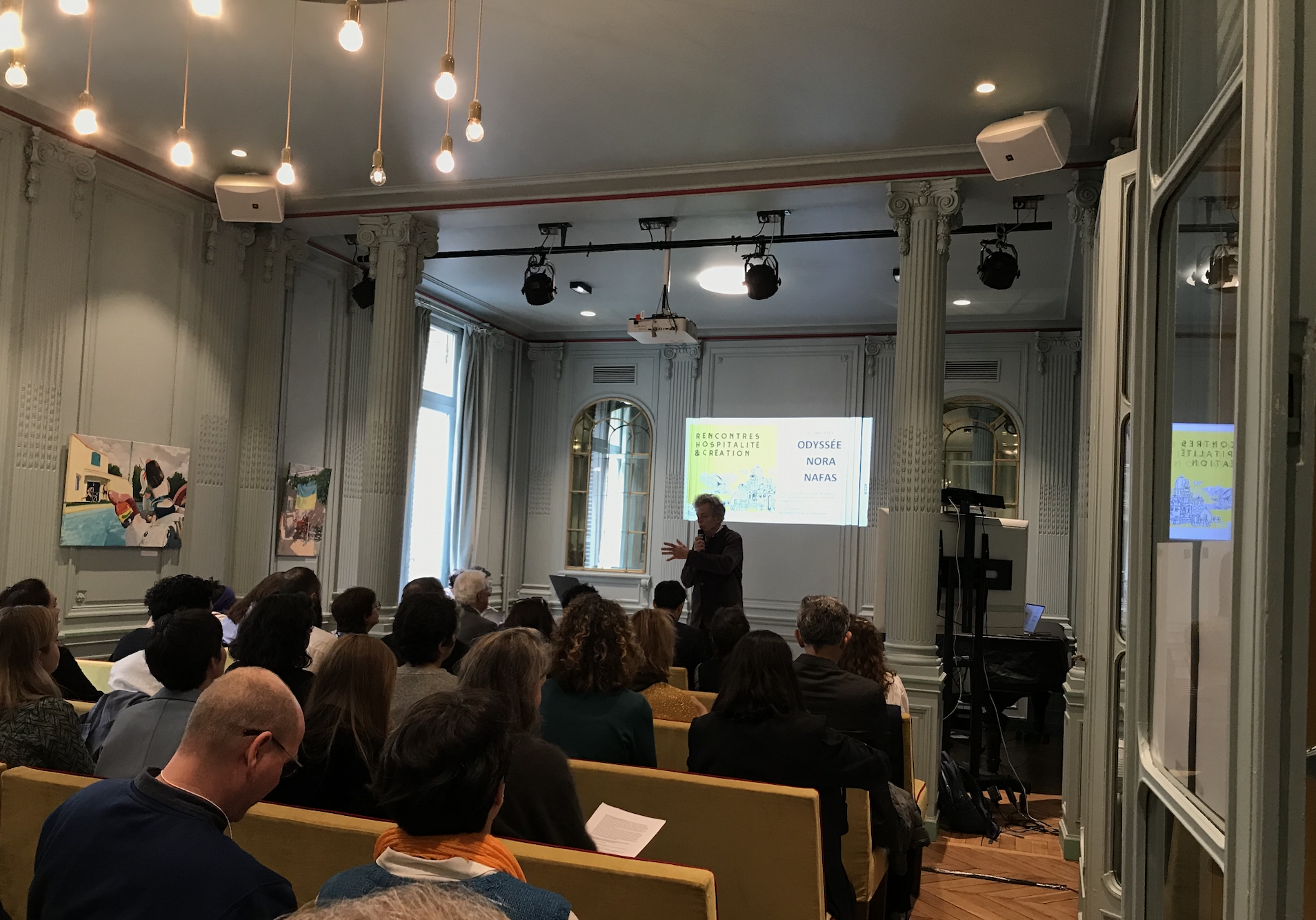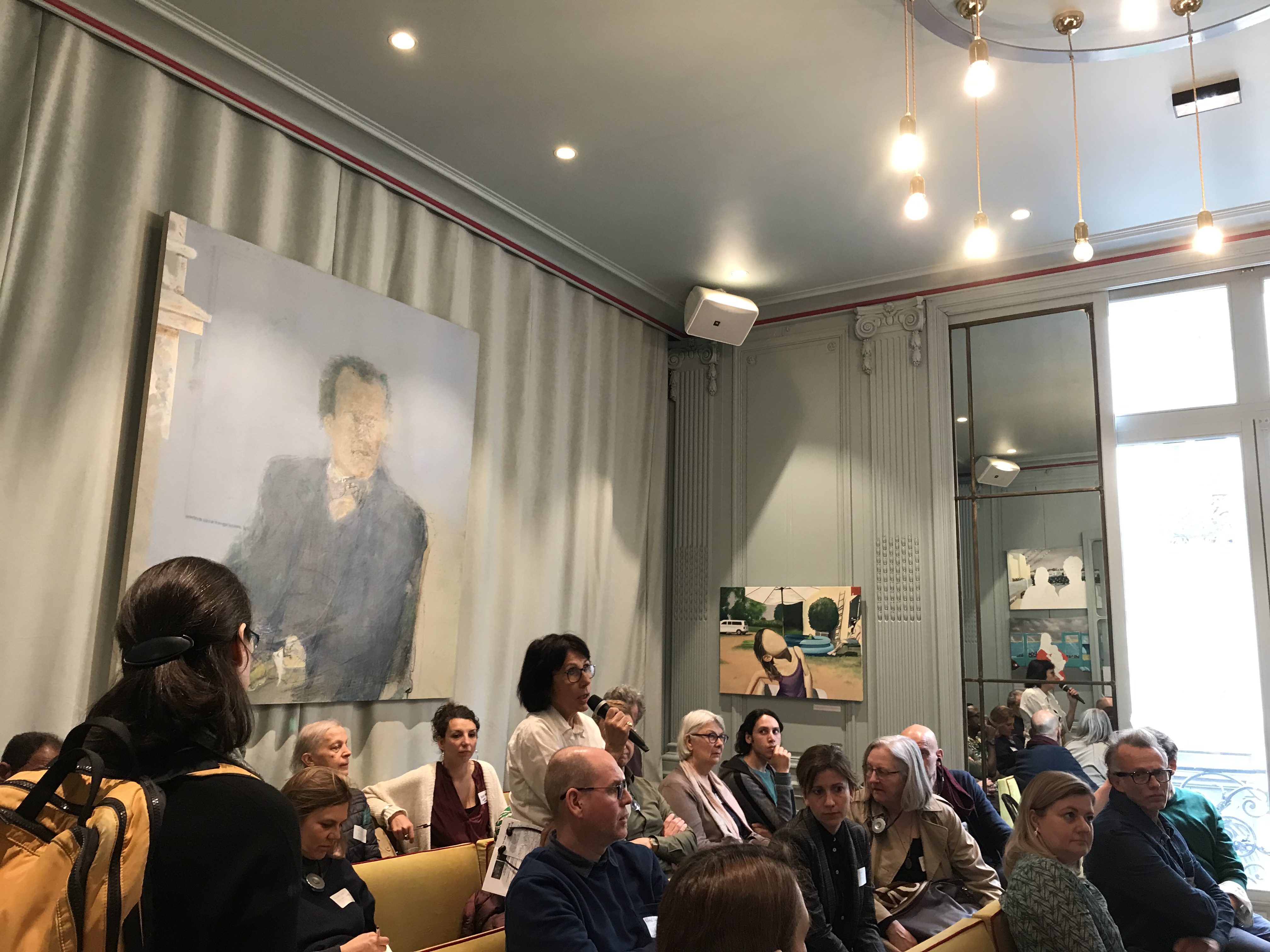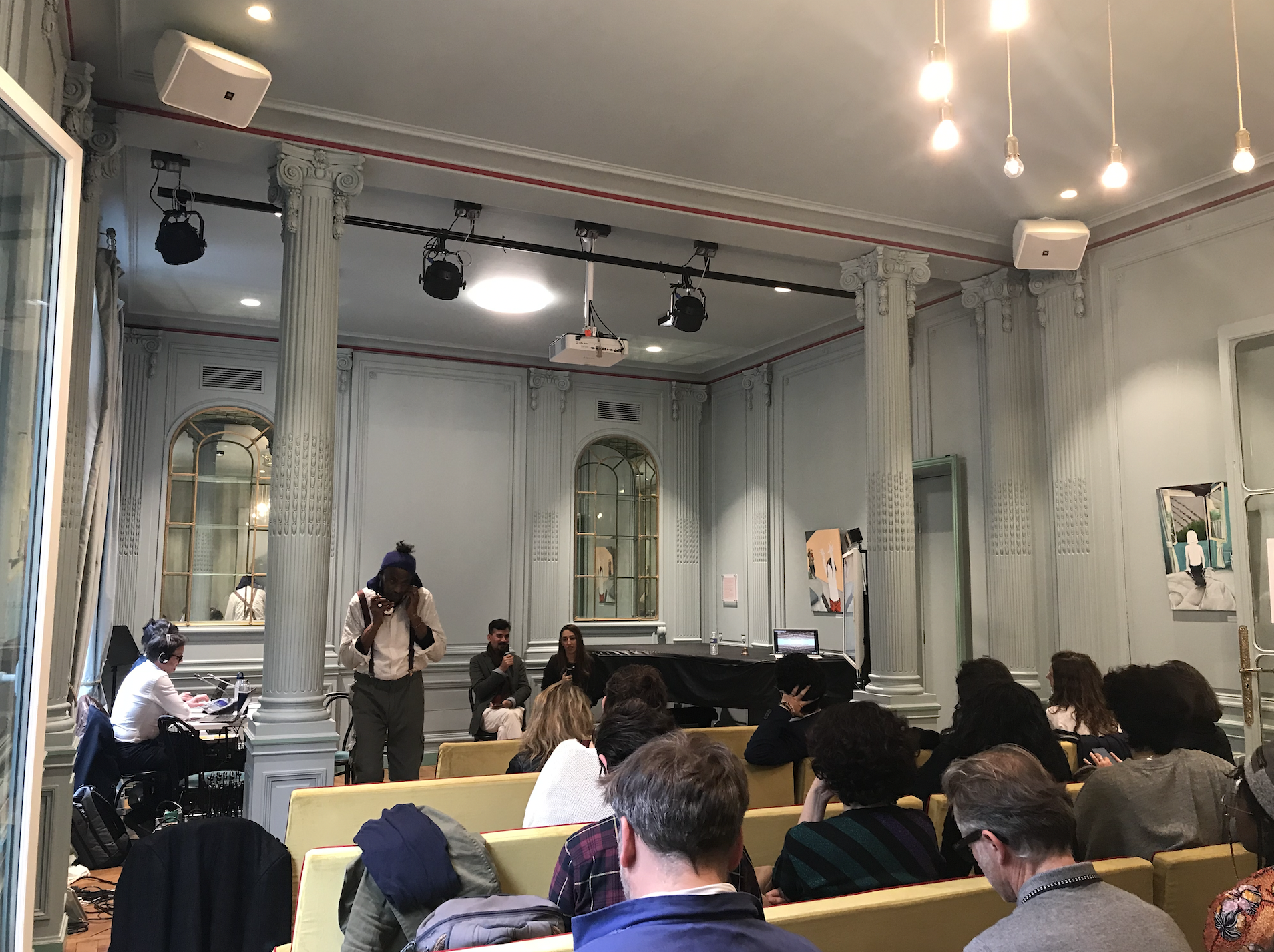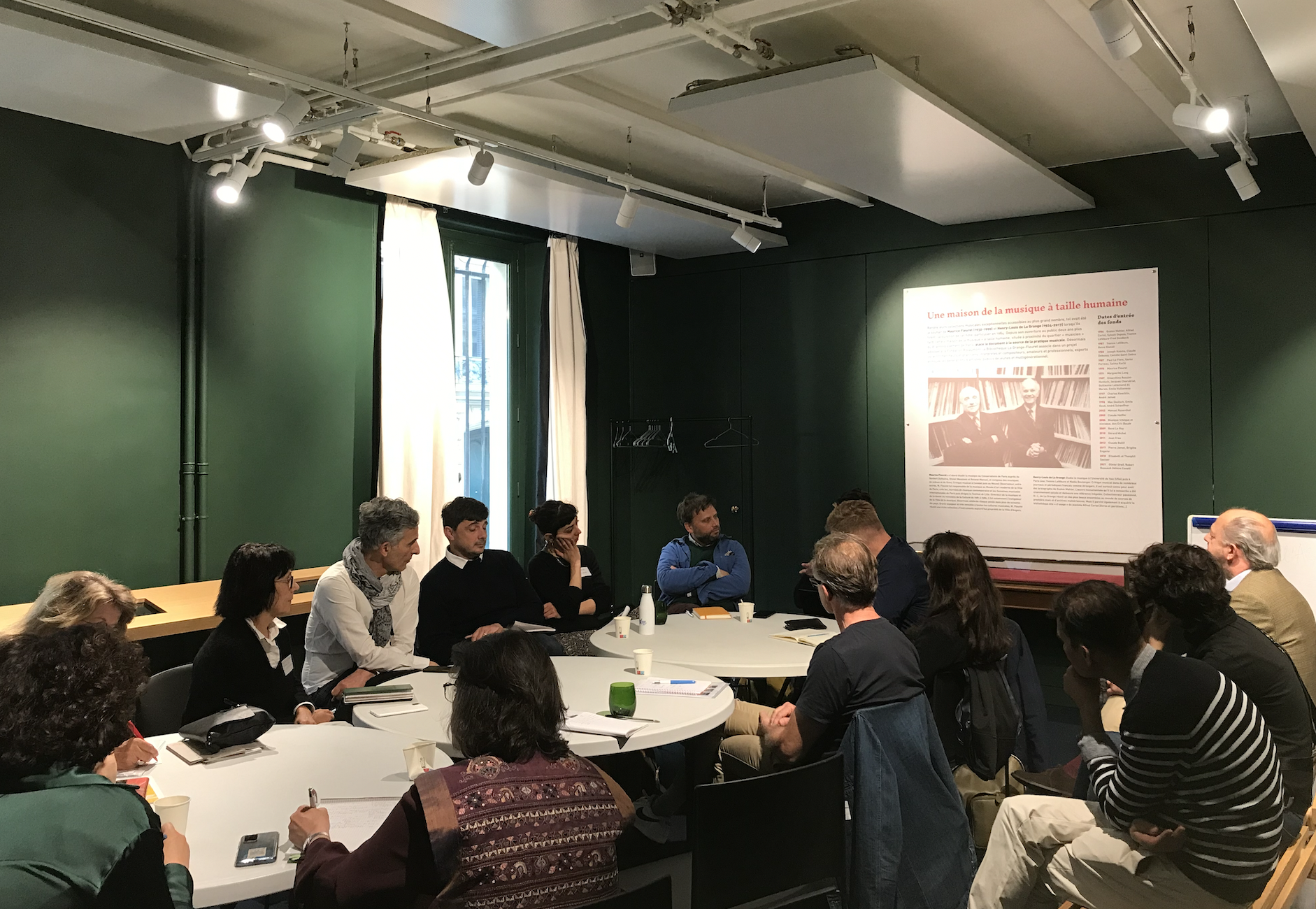To mark the 20th anniversary of the Odyssée residency programme, the ACCR and its partners met at the Grange-Fleuret music library in Paris on 11 and 12 May. Through the sharing of experiences and workshops, these meetings provided an opportunity to reflect collectively on the issues linked to residencies for artists and cultural professionals as envisaged by the ACCR.
These moments of exchange between peers gave each Centre culturel de rencontre the opportunity to present how it operates. The presence of partner institutions and artists who have been or are currently in residence at a CCR enriched the discussions, helping to ensure that the models in place evolve to meet artists' expectations as closely as possible.
/A framework for free expression
The CCRs agree to offer artists, cultural professionals and researchers in residence a framework conducive to creation in which the residents do not have to deal with day-to-day constraints or external pressure.
This privileged setting allows them to devote themselves entirely to their creative work, without it being conditioned by an obligation to achieve a result, to present a work or to carry out research.
For this freedom to be expressed, the importance of tailoring residency formats to the needs of artists is a key factor. This is the approach adopted by Neimënster Abbey in Luxembourg, with 'à la carte' residencies that allow the project to be co-defined once the artist is on site. Communication is a factor in creating a framework for free expression.
/Integration of artists
Residents are an integral part of the daily life of the CCRs. The aim is to offer them a life experience at the heart of the CCR's activities. For example, at the Ferme de Villefavard in Limousin, artists are invited every day, if they wish, to eat with the centre's staff. Thanks to these informal moments and the warm welcome they receive, the artists are fully integrated into the centre.
This integration also involves taking into account the residents and their projects by offering them personalised support according to their profile and ambitions. Supporting their creative work helps them to develop and flourish in the same way as the centre's teams and other artists who are not part of the residency programme. Le Plus Petit Cirque du Monde (PPCM) pays particular attention to emerging artists who are embarking on their first professional project.
/Promoting social projects
One of the common features of the CCRs is the desire to involve local residents and visitors in the project that structures the site. The CCRs are driven by a strong social commitment to fostering links between people around heritage and contemporary creation.
As part of this dynamic, residents can choose projects that will promote social cohesion. This is the case, for example, at Ujazdowski Castle in Poland, which welcomed a New York chef who wanted to create an oven in the castle grounds that could be used by the site's users to cook and eat outside once they had left.
Although the artists are under no obligation to offer a presentation of their work or to lead public mediation sessions, this time of sharing is often set up by mutual agreement between the artist and the CCR. The PPCM teams, for example, take the time to discuss with the artists how they see the relationship with the public, so that the feedback is as beneficial as possible for everyone.
This social aspect of the residency projects is also reflected in the creative work, which is directly inspired by the host area, making sense in a specific context with which the local people identify. This was the case, for example, at the Villefavard farm with the "Works songs" project, which showcased the traditional songs of farmers in the Limousin region. To bring it to fruition, the artist went out to meet students from the agricultural college and the surrounding organic farms. Working on this identity is a way of including local people and promoting their heritage.




